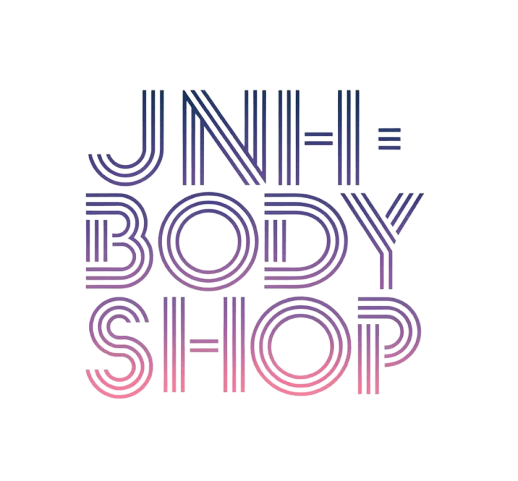Currently Empty: $0.00

The T-shirt is undeniably one of the most powerful garments in the world, and its significance extends beyond its function as a simple piece of clothing. Over the decades, it has morphed into an essential cultural and fashion icon, reflecting societal shifts, technological advancements, and consumer behaviors. As an everyday item that is both accessible and versatile, the T-shirt holds a unique place in the global fashion landscape. This article explores the ongoing role of T-shirts in fashion, their transformation as branding tools, and their power to create social change.
The T-shirt in Fashion: A Staple for All Ages and Styles
The enduring popularity of the T-shirt lies in its remarkable ability to transcend fashion trends. From basic styles to high-fashion pieces, the T-shirt remains a ubiquitous garment that can be dressed up or down depending on context. The evolution of T-shirt fashion has also mirrored shifts in broader cultural and social trends, reflecting the changing values and aesthetics of different generations.
For many, the T-shirt represents the ultimate in casual comfort. Yet, its simplicity is also what makes it adaptable for various occasions. It can be paired with jeans for a laid-back look, tucked into a high-waisted skirt for a retro vibe, or worn under a suit jacket to create a juxtaposition of casual and formal styles. Designers have recognized the T-shirt’s transformative power, with brands ranging from Chanel to Louis Vuitton creating luxurious T-shirts that challenge traditional notions of haute couture. These designer T-shirts often feature bold graphics, intricate embroidery, and high-end materials, elevating the T-shirt from a basic essential to a statement piece.
The T-shirt’s ability to be incorporated into high fashion has made it a symbol of inclusivity. Unlike couture dresses that are accessible only to a select few, T-shirts are affordable and widely available, making fashion accessible to individuals from diverse social and economic backgrounds. This democratization of fashion has cemented the T-shirt as a fundamental piece in almost every wardrobe.
T-shirts as a Branding Tool: A Powerful Marketing Asset
The T-shirt has long been used as a tool for branding, and in today’s world of digital marketing and consumer engagement, it continues to be an essential component of brand identity. Companies and influencers alike have recognized the T-shirt as a prime medium for communicating their brand values and connecting with their audience.
One of the most notable examples of T-shirt branding is Nike, whose iconic swoosh logo and slogans like “Just Do It” have become synonymous with athleticism and empowerment. Nike was one of the first brands to fully embrace the T-shirt as a marketing tool, using it not just for promotional purposes but as a part of their lifestyle branding. The T-shirt became a visual representation of a brand’s ethos, helping customers feel like they were part of a greater community or movement.
Similarly, Coca-Cola has capitalized on the power of T-shirt branding, using the logo and product design to create a sense of nostalgia and connection with its customers. Over the years, the brand has produced limited-edition T-shirts featuring vintage advertisements and special campaigns, turning the T-shirt into both a collectible item and a marketing tool. These T-shirts serve as a reminder of the company’s enduring presence in popular culture and as a tangible link to the brand’s history.
In the era of social media influencers and celebrity endorsements, T-shirts have become an essential vehicle for self-promotion. Many influencers design their own T-shirt lines as a way to engage with their followers. These T-shirts often feature personal catchphrases, logos, or artwork that resonate with the influencer’s brand and their audience’s values. The rise of the influencer-driven fashion industry has given birth to a new wave of T-shirt marketing, one that is deeply intertwined with individual expression and digital presence.
In recent years, the rise of direct-to-consumer e-commerce platforms has made it easier for both established companies and new entrepreneurs to create and sell custom T-shirt designs. T-shirt printing platforms like Teespring and Redbubble enable anyone to become a designer, creating T-shirts with unique prints or slogans that represent their personal brand or political views. The ability to create limited runs of T-shirts has made the process more personal and interactive, allowing consumers to engage directly with designers and creators.
T-shirts and Social Movements: A Tool for Activism
Perhaps one of the most powerful aspects of the T-shirt is its ability to act as a tool for social change. Throughout history, T-shirts have been used as symbols of activism, carrying messages of protest, unity, and empowerment. The T-shirt has become a canvas for individuals and groups seeking to raise awareness about critical social issues and mobilize support for various causes.
In the 1960s and 1970s, the T-shirt became a key part of the countercultural movement. Youth in the United States and around the world wore T-shirts emblazoned with slogans like “Make Love, Not War” to voice their opposition to the Vietnam War. These T-shirts became symbols of rebellion, defiance, and a desire for peace. The graphic T-shirt, with its bold statements and rebellious spirit, quickly became associated with movements advocating for change.
In the 1980s and 1990s, T-shirts continued to serve as a tool for political and social activism. Campaigns for gender equality, LGBTQ+ rights, and racial justice saw individuals using T-shirts to express their beliefs and create visibility for their causes. The now-iconic “I AM A MAN” T-shirt, worn by civil rights activists during the 1968 Memphis sanitation workers strike, is one of the most famous examples of how T-shirts have been used as symbols of social justice.
Today, T-shirts remain an integral part of modern activism. Movements like Black Lives Matter have utilized T-shirts to raise awareness about racial inequality, with the phrase “Black Lives Matter” appearing on countless T-shirts worn by activists around the world. The T-shirt has become a powerful medium for creating solidarity and visibility for marginalized communities, providing a visual representation of collective action and hope for change.
T-shirts have also been used to support environmental causes. Climate change and sustainability movements have seen a surge in T-shirt designs promoting eco-friendly messages, from slogans like “Save the Earth” to designs advocating for the protection of natural resources. The T-shirt as a vehicle for environmental activism is particularly important in raising awareness about the impact of fast fashion and encouraging consumers to make more sustainable choices.
The Role of Technology in the Future of T-shirts
As the fashion industry becomes increasingly digital, T-shirts are evolving with the advent of new technologies. In the coming years, we are likely to see a convergence between fashion and wearable technology, with the humble T-shirt becoming a platform for interactive and functional design. Smart fabrics have already made their way into fashion, allowing garments to monitor health metrics, change color based on environmental conditions, or even power small electronic devices.
For example, future T-shirts may be embedded with LED technology that allows wearers to change the design of their shirt through an app. These shirts could display dynamic graphics, allowing individuals to show support for different causes or personalize their clothing according to their mood or the occasion. T-shirts may also feature built-in sensors that monitor heart rate, temperature, or even stress levels, creating a more interactive and health-conscious garment.
Beyond wearable tech, 3D printing is also poised to revolutionize T-shirt manufacturing. This technology has the potential to reduce waste and make the production of garments more efficient and sustainable. By printing fabric layer by layer, designers could create T-shirts with intricate textures, patterns, and even customized fits, offering a level of personalization that was previously unattainable.
As the demand for sustainable fashion continues to grow, T-shirt manufacturers are increasingly turning to eco-friendly production methods. From biodegradable fabrics to closed-loop recycling processes, the future of T-shirt manufacturing will likely focus on minimizing waste and ensuring that garments are produced with minimal environmental impact.
Conclusion: The Enduring Power of the T-shirt
From its early days as a utilitarian undergarment to its status as a cultural and fashion icon, the T-shirt has experienced an extraordinary transformation. Its versatility, affordability, and ability to carry meaning have made it a symbol of identity, expression, and activism. Whether used as a platform for self-expression, a tool for branding, or a medium for social change, the T-shirt remains a garment that resonates with millions of people around the world.
Looking to the future, the T-shirt will continue to evolve, driven by new materials, technologies, and cultural shifts. It will remain a key part of everyday life, offering endless possibilities for creativity, communication, and connection. The T-shirt has proven to be much more than just a piece of clothing; it is a symbol of how fashion can reflect the changing values, aspirations, and concerns of society.

